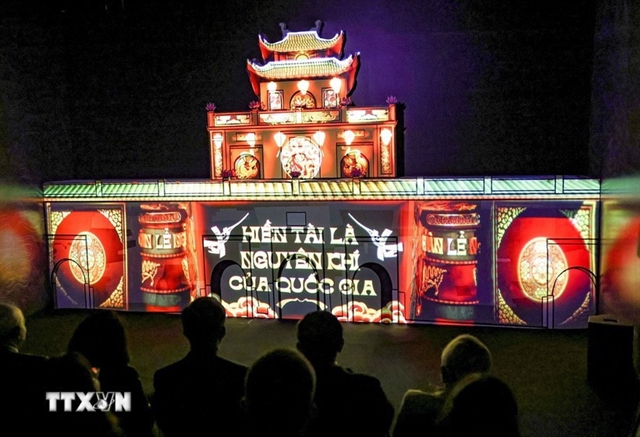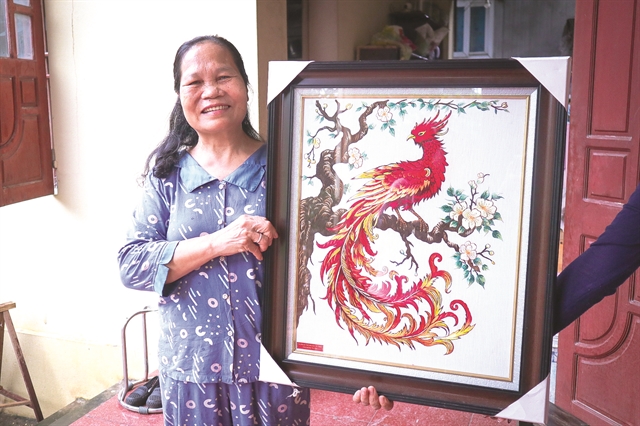 Features
Features

Long Biên Bridge is an iconic structure in the Vietnamese capital. However, the lives of those living underneath reveal a different side to the landmark structure. Paul Kennedy reports.
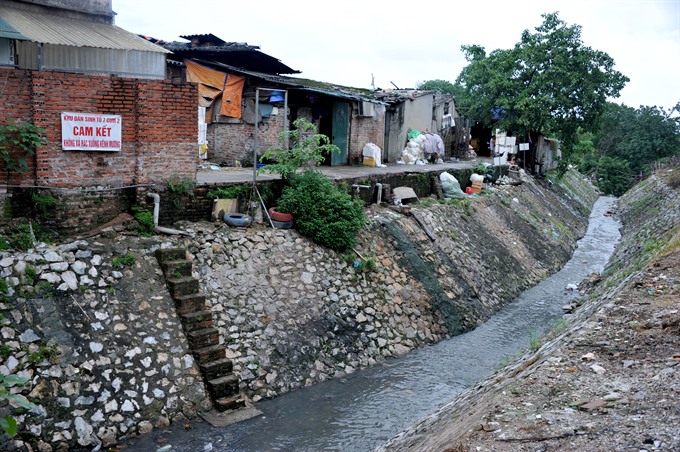 |
| Life on the edge: The neighborhood, which stands behind Long Biên market, is one of the most polluted spots in Hà Nội, Việt Nam. Hundreds of families reside here due to extreme poverty, a result of the city’s rapid urbanisation. — VNS Photos Nguyễn Hiếu |
Long Biên Bridge is an iconic structure in the Vietnamese capital. However, the lives of those living underneath reveal a different side to the landmark structure. Paul Kennedy reports.
A sign on the banks of the canal that runs parallel to Long Biên Bridge reads: “Môi trường hôm nay, Cuộc sống ngày mai”. It roughly translates to “Environment today, life tomorrow”.
This is the official way of telling those that live here not to throw their waste into the water. Unfortunately, the message isn’t hitting home.
As hundreds of thousands of mopeds cross the cantilever structure each day and tourists happily pose for selfies on this landmark bridge, the lives of those living below often goes unnoticed.
But what is clear to see is the amount of garbage clogging up the canal. The stench is unbearable to those visiting, but just part and parcel of everyday life for the people that call this place home.
“If you look over the other side it is so stunning, it is just such a shame when you look over this side and you see the state of it to be honest,” said Michaela Webb, a tourist visiting Việt Nam from Liverpool in the United Kingdom.
“Hopefully the next generation can be educated more about recycling and maybe it can be improved over time. It would be such a shame to see it get any worse than it is now.”
Those in power know this, and are doing what they can to improve the quality of life for the people that live here. But with so many people living and working in the area, many have a blatant disregard for the authorities who are paddling upstream when it comes to keeping the community clean and tidy.
Trần Thị Thìn, 68, has lived there for 20 years.
“The living conditions are unsuitable, but we have to accept it,” she said.
“I know that it’s complicated. From the living conditions to the neighbours, everything just doesn’t suit me. People often argue, but we yield to avoid conflict.
“Yes, the smell is too strong. Since we can’t do anything, we just leave it like that to keep on living. If I were still strong, I wouldn’t live like this.”
 |
| Daily chores: Residents of the neighbourhood hanging their clothes to dry outside makeshift houses. |
Thìn, like many others living in this community, is thankful for what she’s got. And locals do believe the area is showing signs of improvement.
“It’s cleaner. Before, the vegetation grew as tall as a man.”
Bùi Văn Khuê, 50, has lived in the area for four years. For him, it’s convenient as it is close to the market where he works.
“I’ve lived here for quite a while, and I’ve got used to it,” Khuê said.
“When I first came here, I felt uncomfortable, but now I’m used to it. You live for a few years and things become normal. The more you live, the more you’ll get used to it.”
“The authorities recently have cleaned up a lot. They collect trash and carry it away.
“They encourage the young (to collect garbage), even foreigners come here too. Overall, the situation is better now.”
Long Biên Bridge was built between 1899 and 1902, by French architects Daydé & Pillé and opened in 1903. Before Việt Nam’s independence in 1945, it was called Paul Doumer Bridge, named after the then Governor-General of French Indochina.
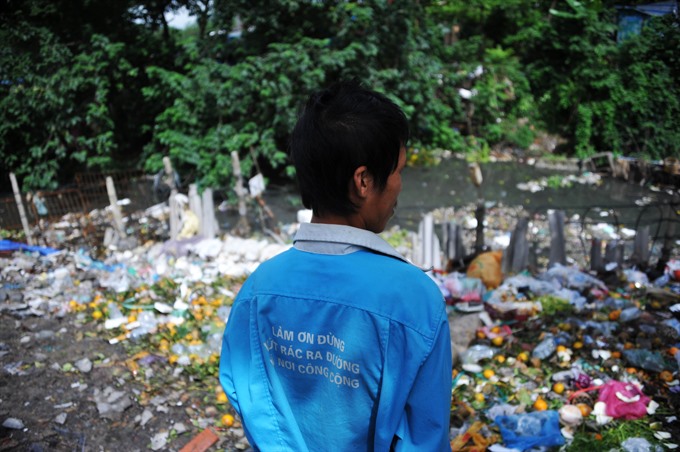 |
| Endless work: An environmental worker looks at the trash dumping ground, which stands in between the river bank and the neighborhood. |
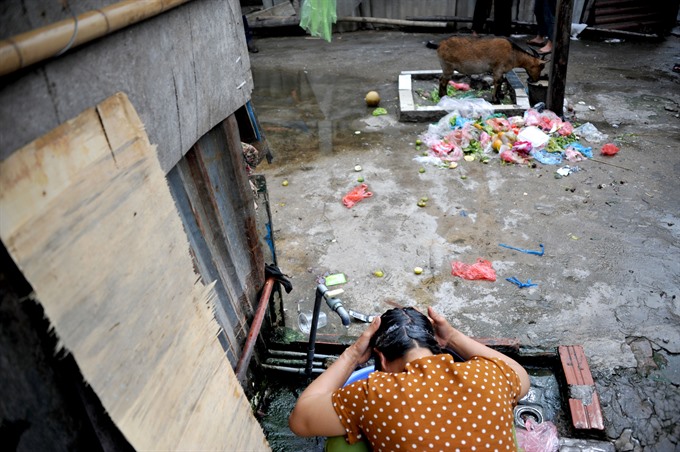 |
| Making do: A woman, who lives in the neighborhood, washing her hair. The same water outlet is also used for washing vegetables, laundry, and cooking. |
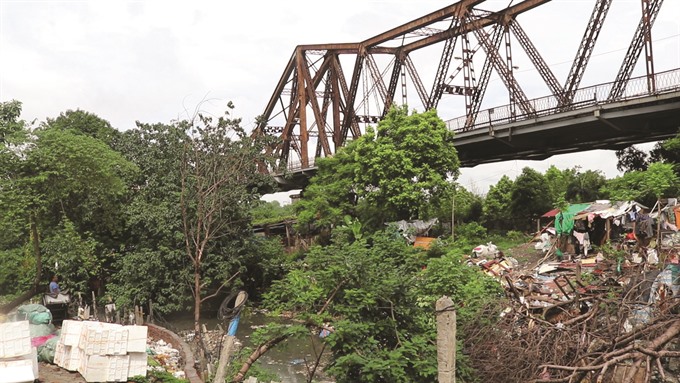 |
| Eyesore: The garbage on the banks of a canal is clearly seen below Long Biên Bridge. |
When it opened it was one of the longest bridges in the whole of Asia and due to its critical position crossing the Red River, is was heavily bombed during the American war of destruction against North Việt Nam but remained largely intact, a fact that is often celebrated in poetry and song.
There are plans to transform the structure into a walking street, to encourage more tourists to visit, and open cafés along it.
But before any such plans are completed, the authorities know first they must tackle the problems below.
Nguyễn Văn Hưng is deputy chairman of Phúc Xá Ward, Ba Đình District, Hà Nội. He warned that fines would be issued for those caught illegally dumping waste.
Often people who are caught in the act of dumping garbage ignore officials and take no notice of the many warning signs on the banks of the canal.
“The garbage behind Long Biên wholesale market and under the bridge comes from the local households who are mostly workers in the market,” Hưng said.
“It obviously affects the environment here.
“People are mostly seasonal workers. Often times at night, people dump all the waste down the ditch. We receive feedback from the local about this issue too.
“After checking, at the end of 2017, the local authorities have cooperated with the Ba Đình Urban Environment Enterprise to collect all the garbage and put up signs prohibiting dumping garbage.
“We also do communication work to raise people’s awareness of environmental protection.
“After a while, the seasonal workers come, since they do not know the rules here, they dump garbage.
“In the future, we have plans and measures to tackle the situation. After talking to people, if they don’t follow the rules, they will be fined.
“We will also supervise daily, making sure that they put trash in the right place. We are adamant, especially since Long Biên Bridge is a tourist attraction.”
Long Biên Bridge is a gem in Hà Nội’s tourism crown. But for those that live underneath it, that gem needs polishing to ensure they can have a happy and healthy life.
“To be honest, I’m so old and weak now, what can I do?” said resident Trần Thị Thìn.
“I am just trying to make ends meet, leaving it up to fate.” — VNS
*Additional reporting: Hồng Vân and Bảo Hoa

